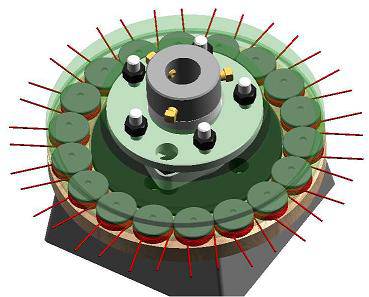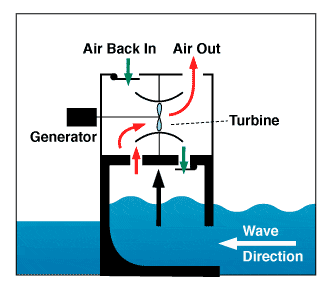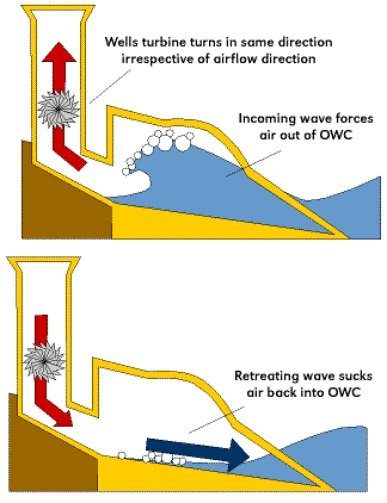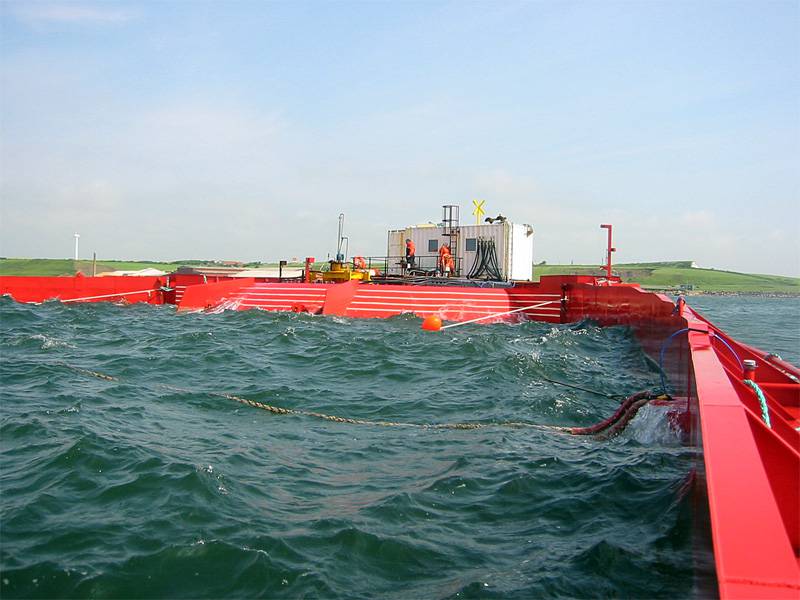Details of how to make an initial claim and request different formats are available on the .gov website: https://www.gov.uk/pip/how-to-claim
Initial claim process
The initial claim process collects basic information about you and about whether you have one of the following conditions:
• mental health condition
• behavioural condition
• learning difficulty
• developmental disorder
• memory problem
To see in detail what questions are asked at the initial claim stage, you can download a specimen copy of the PIP1 form from the DWP website here. This form should not be used to start your claim for PIP; you should call the DWP to obtain a barcoded, personalised form.
It is worth spending some time preparing for the telephone interview to try to ensure you have all the necessary information to hand. This will include:
• your National Insurance number
• your address
• your date of birth
• your bank or building society details
• your telephone number
• the name of your doctor or health worker you want the DWP to contact
• details of any time you’ve spent out of the country
• details if you’re in a care home or hospital, or if you’ve recently been in one
• whether you have a terminal illness.
Paper or online ‘How your disability affects you’ PIP2 form
When you make you initial telephone call to claim PIP, you should be offered the choice to either have a paper ‘PIP2 ‘How your disability affects you’ form posted out to you or to complete your claim online.
Paper form
The paper form, including an accompanying tear-off letter, is around 38 pages long and there is also an information booklet which is 12 pages long. An address to return the form to is printed on the back page. This page can be folded so the address shows in the window of the envelope that comes with the form.
Online form
If you decide to claim online, you will be emailed a link to a web page where you create a password and enter basic personal information so that the DWP can check it matches what they have on record about you.
You must do this within 7 days of being sent the link. If you miss this deadline you will need to contact the DWP again to request a new link.
Once you have completed this stage, you will be sent a security code which allows you to access your online form.
The online form is identical to the paper form.
You can do the different sections in any order you choose and you can save the form and return to it at any time.
You can also upload scans or photos of supporting evidence.
You can send further supporting evidence later, either online or by post, so don’t delay returning your form because you are waiting for more evidence.
The time limit for the DWP getting your form back is the same whether it is a paper form or an online form. This is probably the main advantage of the online form – you do not have to allow time for the form to be sent and returned by post. It also removes the risk of the form getting lost in the post, although there is no guarantee there won’t be technical problems with the online form.
As with the paper form, you can request further time to complete the online PIP2.
Once you have uploaded any supporting evidence you can upload your form and you will be sent a confirmation email. On the screen that tells you your information has been sent you will be given a link to download a completed copy of your form in .pdf format.
It is vital that you do this as you will not be given another chance to download your completed form and you will not be able to view it again online.
Although you can still log back into your account the only thing you can do is upload further evidence.
The decision about whether to use a paper or an electronic form is a personal one. At the moment we understand that around a quarter of claimants are choosing the online form.
What the form asks
The form collects details about:
• which professionals you see
• your health conditions or disabilities
• your medication and treatment
There are then a series of questions about each of the daily living and mobility activities, including asking about any aids or adaptations you use, whether you can complete the activities safely, to an acceptable standard, repeatedly and in a reasonable time and how your condition varies. The questions are accompanied by detailed guidance about the kind of information you need to provide.
You are also encouraged to send supporting medical evidence such as prescription lists, care plans and information from health professionals and/or to tell the DWP who they can get supporting evidence from.
In addition, you can supply non-medical evidence, such as a letter from your social worker or a friend or relative who helps you carry out everyday activities.
www.benefitsandwork.co.uk
15
If the form is not returned
If you do not return the form within the time limit and you do not have good cause for the delay, your claim will be refused. When deciding whether you have good cause the decision maker must consider your state of health at the time and the nature of any disability you have.
However, if you do not return the form and you have been identified from your initial claim as having a ‘mental or cognitive impairment’ then Independent Assessment Services and Capita have been told that they must still make an assessment, either by collecting additional evidence – which might include telephoning you – and/or by asking you to attend a medical. The evidence will then be passed to the decision maker in the normal way.
Assessments
Once the form – and any additional evidence you include – has been returned, the health professional must review it and decide if they should send for any further evidence.
When they have all the evidence, they consider that they need the health professional has to decide what sort of assessment to carry out. This may be based just on the paper information, based on the paper information plus a telephone call to you or by requiring you to attend a face-to-face, telephone or video assessment. There is more on this in the section on What sort of assessment will I have, below.
At the time of writing:
77% of assessments are telephone
16% are paper
5% are face-to-face
2% are video
Paper-based assessments
Unlike for ESA, the health professional can decide not to call you in even if they are going to assess you as scoring zero points. Guidance from the DWP states that paper based assessments are appropriate in:
• Cases where the evidence indicates that it is unlikely that the claimant’s condition has any impact on any of the daily living and mobility activities.
• Cases where the evidence indicates that the claimant’s condition has a significant impact in many of the daily living and mobility activities.
• Cases where there is strong evidence on which to advise on the case and where a face-to-face consultation is likely to be stressful to the claimant.
The DWP will send all the papers relating to your PIP claim to whoever carries out PIP assessments for the area where you live – either Capita or Independent Assessment Services. They will decide whether to carry out a paper or phone assessment.
If they decide to carry out a paper assessment this means that they will consider all the written evidence that has been submitted. This could include not just the evidence you have submitted, but any written evidence obtained from elsewhere e.g., your doctor, your nurse, social services etc.
They may also consider previous claim forms, although these will be of limited value given how old they are likely to be. There have been instances of them obtaining copies of your Work Capability Assessment.
www.benefitsandwork.co.uk
16
Rather confusingly, the assessor might carry out a paper assessment, but need to phone you to clarify some issues. This is not a phone assessment. You should be able to tell as they will not ask you in detail about all the PIP activities. In addition, unlike a phone assessment, they are not required to give you 7 days’ notice of the call.
Telephone assessments
At the time of writing there are very few face-to-face assessments and the majority of assessments that are carried out will be telephone assessments.
Face-to-face assessments
Some claimants will have to attend a face-to-face assessment with a health professional working for Independent Assessment Services or Capita, depending on where you live.
You must be given 7 days’ notice of the date and time of the assessment and in the case of a face-to-face assessment where it will take place. The notice must be in writing unless you have agreed to accept communication by another means, such as text or email. The 7 days will not apply if you have agreed, in writing or otherwise, to accept a shorter notice period.
Once an assessment has been made, a decision maker then considers all the evidence, including any additional evidence obtained by you, before deciding about how many points should be awarded for each component. The number of points will determine whether you are eligible for an award of PIP and, if so the components and rates.
There’s more about telephone and face-to-face assessments later in this guide.
Video assessments
Currently there are very few of these, but they are increasing in number, perhaps because they are cheaper that face-to-face.
Clearly there are many technical issues with video communication, including the speed of your connection and whether you have a suitable smartphone or computer to take part in a video assessment. There are also all the issues of freezing, lag and drop-outs that may mean that video assessments are a poor option for you.
Completing the form – what you need to know before you begin
This is your opportunity to give a detailed and accurate explanation of how your condition affects you in relation to the points scoring activities. So, you need to complete the form in as much detail as you can.
It’s definitely worth using additional sheets if you can’t fit everything you want to say in the boxes on the form. Make sure you include your name, date of birth and National Insurance number on the top of every additional sheet you use and, if possible, staple them to the back of the questionnaire.
Keep a claim file
A claim file is just a folder, or a ring binder, in which you keep notes and copies of everything to do with your PIP claim, but it can save you months of frustration and lost benefits if the DWP either lose or shred your records.
What to keep in your claim file.
1 Keep a copy of everything you send the DWP
www.benefitsandwork.co.uk
17
Most especially, keep a copy of your completed claim form and keep it safe. We do know how difficult and expensive this can be if you have to photocopy it rather than keep a digital copy, but if you don’t you may regret it because:
• Your claim form may be lost by the DWP – it does happen.
• Even if your claim is successful the award will be for a limited period, and you’ll have to reapply for PIP towards the end of that period.
• If you’re not happy with the result of your claim it will be harder to challenge the decision effectively without a copy of your original form, although you should receive a copy if you reach the appeal stage.
2 Keep every letter you receive from the DWP
Put them all in a folder in date order along with copies of letters you’ve sent them. (We had one client who was able to claim thousands of pounds in backdated benefits because he had kept copies of letters right from the beginning of his claim).
3 Keep a note of any phone calls to or from the DWP
Ask for the name of anyone you speak to and keep a note of it, along with the date and the subject of the call.
Try not to feel embarrassed or awkward about this as DWP staff are used to giving their names. In the very unlikely event that anyone refuses to give you at least their first name and the section they work on, ask to speak to their Supervisor.
At the end of this guide, you will find a Claim file record sheet which you can use for making a note of calls and letters.
Physical and mental health
When you complete the form, you need to give details of any problems you have with each activity as a result of any physical and/or mental health conditions and learning difficulties. You should also include any problems caused by the effects of any medication you take.
‘Reliably’ – the most important PIP word
It’s vital that, before you complete your form, you understand that just because you can carry out an activity, that doesn’t mean you are prevented from scoring points for being unable to do it.
Guidance issued by the DWP states that you need to be able to complete an activity ‘reliably’ in order for it to apply. According to the guidance, ‘reliably’ means whether you can do so:
• Safely – in a fashion that is unlikely to cause harm to themselves or to another person. (See the ‘Safety and supervision’ section immediately below for more on this).
• To a necessary and acceptable standard – given the nature of the activity.
• Repeatedly – as often as is reasonably required.
• In a reasonable time period no more than twice as long as a person without a physical or mental health condition would take to carry out the activity.
Initially, the government refused to put this guidance into the regulations themselves. But after considerable pressure it has been incorporated, although the word ‘reliably’ itself has not been included. (See: ‘General definitions you need to know’ for the regulations on this).
The DWP guidance also states that ‘pain, fatigue, breathlessness, nausea and motivation’ will all be ‘key factors’ in deciding whether an activity can be done reliably.
www.benefitsandwork.co.uk
18
So, for example, if you can ‘wash and bathe unaided’ you will not score any points for that activity. But if it takes you hours to do so or it would be dangerous to leave you alone to bathe – for example, because you might have a seizure – then you may score points.
Or if you could walk 20 metres once, but afterwards you would be so exhausted that you could not do so again for hours or you would be unable to carry out other everyday activities after walking 20 metres, then you may count as not being able to do so.
Or if you can walk, but only in considerable pain, you may be able to score more points than you think. Let’s say you are someone who walks over 50 metres only by pushing through the pain, for example because you want to stay as active and independent as possible. Because the meaning of ‘reliably’ includes ‘to an acceptable standard’, you may be able to score points for walking 50 metres or less by showing that the distance you walk in considerable pain does not count as walking ‘to an acceptable standard.
Or possibly you are able to feed yourself from a plate, but because of your condition you drop considerable quantities of food on yourself and on the floor, then it may be considered that you are cannot convey food and drink to your mouth to an acceptable standard and so should score points.
Decisions about issues such as what is safe, what is a reasonable time and a good enough standard are subjective ones. All you can do is give as much detailed evidence as you can and, if you are not happy with the decision, consider an appeal.
Safety and supervision
Previously, DWP have argued that a claimant can only score points for being unsafe if harm is likely to occur on more than 50% of the occasions on which they attempt an activity.
So, a claimant with epilepsy who has seizures twice a week would not get points for needing supervision when cooking. This is because they could not show that it is ‘more likely than not’ that they will have a seizure on any given occasion when they prepare food.
However, on 9 March 2017, in [2017] AACR 32ws a panel of Upper Tribunal judges held that the DWP were wrong.
Instead, they said, the decision maker should look at whether there is a real possibility that harm might occur and also at how great the harm might be. The greater the potential harm, the less likely it needs to be that it would happen on any specific occasion.
So, if there is a real possibility that a claimant with epilepsy might have a seizure whilst cooking then then they reasonably require supervision for this activity, even though the chances of a seizure happening on any specific occasion may be quite small.
They should score points for needing supervision even if they don’t actually have anyone to provide it.
In the same way, someone who is deaf may be unable to hear a smoke alarm if a fire starts when they are bathing and so may reasonably require supervision.
But the Upper Tribunal went even further than this.
They ruled that where a claimant is at risk all the time, then they may also be at risk when carrying out PIP activities that do not carry any additional likelihood of harm.
www.benefitsandwork.co.uk
19
So, a claimant may not be at any additional risk of harm if they have a seizure when using the toilet or taking medication, for example. But, because they are at risk whatever they are doing, then we would argue that they still reasonably require supervision during these activities, because they cannot do them safely without supervision.
Safety and supervision for daily living activities
Activities 1-5 all have points for needing supervision.
Other activities such as activity 6 ‘Dressing and undressing’, don’t have points for needing supervision, but in that case, you may be able to argue that you cannot do them safely at all.
This decision may allow you to score additional points in relation to daily living activities if, because of a mental or physical health condition or learning difficulty you, for example:
• need someone with you in case you fall, especially if you have a condition such as osteoporosis, so that the result of a fall could be very serious;
• have angina, diabetic or asthma attacks and need someone with you to help administer your spray or other medication;
• sometimes get angry or distressed when left alone and may endanger yourself by smashing things or hitting out at chance callers;
• can experience a change in your condition without your being aware of it and, for example, you may become very high or very low and become a danger to yourself or others;
• do things like leaving the cooker on, leave taps running, put cigarettes down and forget about them, leave doors and windows open or wander off;
• take overdoses or harm yourself in some other way;
• become distracted by obsessive thoughts, the need to perform ritual actions or by hearing voices, so that you can become dangerously distracted when doing things such as handling sharp knives.
Legally, for PIP, supervision is only to protect you from danger, not other people. So, if you pose a danger to other people then you may score points for not being able to do that activity safely at all, even with supervision.
Giving evidence about safety and supervision for daily living activities
Where you might be at additional risk because of the nature of an activity, such as preparing food or bathing, you can give details in the ‘Extra information’ section for that activity.
For example, can you give examples of dangerous or distressing things that have happened to you when you have not had supervision?
Or how danger has been avoided because you did have supervision?
Can you give examples of the ways in which having someone with you might make you less likely to come to harm? What can they say or do or prevent you doing?
Have you ever been admitted to a hospital as a voluntary patient or on a compulsory section because it was not safe for you to be left alone?
Where there is no additional risk from that activity, but you are always at risk because of your condition, you can write something like:
‘Because I have seizures which can be life-threatening, I require supervision at all times, including when I am dressing and undressing.’
www.benefitsandwork.co.uk
20
Safety and supervision for mobility
The Upper tribunal held that the same arguments apply to the ‘Planning and following journeys’ -called ‘Going out’ in the PIP claim form – mobility activity, though not to the ‘Moving around’ activity.
The Upper Tribunal has ruled that you will not score points for ‘planning and following journeys’ if the only help you need is to communicate with people you meet along the journey (DA v SSWP [2015] UKUT 344 (AAC) ).
Guidance issued to DWP decision makers argues that people who have a seizure and need time to recover afterwards should not score points on this basis for daily living activities, as they can make themselves safe at home.
However, the guidance goes on to say that points may be scored for needing time to recover from a seizure outdoors because it may not be possible for the claimant to make themselves safe.
Aids and appliances
When completing your PIP form and attending the assessment, it’s really important to understand the vital role that aids and appliances can play.
Your use of aids or appliances may entitle you to additional points, provided it is accepted that you need to use them. They can even entitle you to a PIP daily living component award without any other points being scored.
On the other hand, aids and appliances can be suggested by the DWP as an alternative to getting help from another person, in order to reduce your score.
What are aids and appliances?
Aids and appliances can include small items like an auto chopper or tipping kettle, or larger items such as a perching stool or walking frame. They can even include adaptations, such as single lever arm taps, a bath rail or a walk-in shower. Prosthetic devices such as artificial limbs or a stoma also count, but not contact lenses or a joint replacement.
Aids that help with mental health issues are also included, such as: reminder apps to make sure you eat, drink, wash, etc., text to speech software if you have difficulty processing written information, a divider plate to stop food items touching each other – an issue for some people with conditions such as ASD, the Brain in Hand app to manage anxiety.
The definition given in the legislation is as follows:
“aid or appliance”-
(a) means any device which improves, provides or replaces your impaired physical or mental
function; and
(b) includes a prosthesis.
Your ability to carry out an activity is to be assessed –
(a) on the basis of your ability whilst wearing or using any aid or appliance which [you normally wear or use; or
(b) as if you were wearing or using any aid or appliance which you could reasonably be expected to wear or use.
So, any aids and appliances that you normally use will be considered and also those which you could ‘reasonably be expected’ to wear or use – even if you don’t.
www.benefitsandwork.co.uk
21
Everyday objects can count as aids and appliances depending on how you use them. If they would be used in the same way by someone who did not have a similar condition, then they probably won’t count.
So, for example, if you use an ordinary bed to sit on whilst dressing that would probably not count as an aid, as people without any health issue commonly sit on the bed whilst dressing. On the other hand, if you have a profiling bed and you use its functions to help position yourself so that you can get dressed, then this probably will count.
If you could only rise from sitting on the toilet by holding onto a radiator or a sink then that may well count.
Increasing your points
You generally get awarded 2 points if you need to use aids or appliances for most PIP activities.
It’s possible to score 8 points and be awarded the standard rate of the daily living component based solely on your need to use aids and appliances.
For example, you may have severe arthritis and as a result you need to use
• An auto chopper for chopping vegetables, which might attract 2 points for 1 b). Needs to use an aid or appliance to be able to either prepare or cook a simple meal.
• Easy grip cutlery to eat with, which might attract 2 points for 2 b)(i) Needs to use an aid or appliance to be able to take nutrition.
• A flannel strap, for washing your back might attract 2 points for 4 b). Needs to use an aid or appliance to be able to wash or bathe.
• A bottom wiper, which might attract 2 points for 5 b). Needs to use an aid or appliance to be able to manage toilet needs or incontinence.
In theory, even the enhanced rate could be awarded solely for the use of aids and appliances.
So, it’s clearly very important that you give details of any aids or appliances you use and why you use them. As you go through the section on completing the PIP2 form in the guide, we give examples of relevant aids and appliances for each activity.
It’s equally important that you give the health professional at your assessment, if you have one, the same information and don’t assume that they have gathered this information from reading your PIP2 form.
Refusing you points for aids and appliances
Even if you detail the aids and appliances you use, the assessor or decision maker may argue that you don’t need to use them and not award you points.
Below we list some of the main reasons for refusal and how to deal with them in advance.
You manage other activities
The DWP will often argue that if you can do one activity without an aid you can manage others that they consider similar, without actually discussing this with you.
So, for example, if you say that you need grab rails to rise from sitting on the toilet but don’t say how you rise from sitting at other times, you may not be awarded points. So, it’s worth explaining how you manage elsewhere, even if it doesn’t relate to the PIP activities. For example, if you watch TV sat in a chair with arms that you can use to lever yourself up and use the table to lean on when getting up from meals, say so.
www.benefitsandwork.co.uk
22
If you can use social media such as Twitter and Facebook, the DWP may argue that you can therefore make budgeting decisions and plan journeys. So, it would be worth explaining that your social media use does not require concentration, the ability to understand complex information or make decisions.
One very common reason used for refusing points for aids is that you can drive. According to the DWP this means you have good grip strength and range of movement in your hands and wrists, can rise from sitting, have good concentration and so on.
We have a separate section covering ‘If you drive a car’, that discusses this. But you need to be aware that driving a car is a very commonly used source of assumptions for the DWP
Not medically required
It is often argued that because you have not been advised by a health professional to use a particular aid or appliance then it is not medically required and is simply a matter of choice.
But as we saw above, there is no legal requirement that you have need to have medical advice to use an aid or appliance.
Instead, you need to show that:
(a) it improves your ability to do the activity to a reliable standard, and
(b) that you normally use the aid or appliance, or it would be ‘reasonable’ to use an aid or appliance for that activity.
For example, you may need an electric tin-opener to improve your ability to use your wrists to open a can, or a frame to improve your ability to use your legs for rising from sitting.
You may need the aid because, for example, you simply can’t do the task without it or because it takes too long without it or it is too painful without it.
So, the fact that an aid has not been recommended by a health professional does not in any way mean you can’t score points for needing it.
You may not have even considered discussing your difficulties with getting off the toilet, for example, with a health professional. There may not be any funding available to you to get the particular aid or appliance. Or there may be a long waiting list to get advice or help.
But especially if the appliance is something like grab rails that would often be fitted by a local authority, it is worth you explaining in detail why you don’t have them yet or why you bought them yourself.
It does not count as an aid or appliance
Sometimes you may use an everyday object as an aid or appliance, but the DWP will not accept that it counts as one.
We have already seen that an ordinary bed will probably not be accepted as an aid to dressing because it is commonly used by people without any health condition to sit on whilst dressing (CPIP/3369/2015). However, crutches used to help a claimant stand whilst dressing could be an aid (CPIP/285/2019).
In the same way, an upper tribunal judge found that plastic knives and forks are not an aid because they are ordinary every day implements for eating food. (CSPIP/543/2016) and a different judge held that a biscuit tin is not an aid for managing medication (CSPIP/666/2014)
However, many other everyday objects can count as aids so long as they are used to make up for an ‘impaired function’.
An upper tribunal judge found that a fan heater and a hair dryer could count as aids when used to reduce stiffness in a claimant’s hands, caused by a medical condition, before performing tasks such as using the toilet in the morning. (CPIP/2574/2018)
If the aid you are claiming points for is an everyday object that you are using for a different purpose, then it is worth explaining what ‘impaired function’ it is being used to help with as well as what activity you use it to help with.
For example, one claimant told us they used a child’s step to raise their feet from the floor when sitting on the toilet because it eased the pain of sitting in that position and made emptying their bowels easier. So, the child’s step is used to aid the impaired functions of sitting and of emptying the bowels and it helps by raising your feet from the floor whilst managing toilet needs.
Aids instead of help
You may say that you cannot carry out an activity, or cannot do so without help from another person and score yourself highly. But the decision maker may argue that you would be able to do the activity without help if you used an aid or appliance instead, which gets you fewer points.
For example, you may say that you need assistance to be able to wash your body between the shoulders and waist because you can’t wash your back, which scores 4 points.
But the decision maker may say that you are able to raise your arms to shoulder height and could use a flannel strap or back scrubber to wash your back, scoring just 2 points instead.
In fact, holding your arms at the angles needed to use a flannel strap or scrubber effectively and moving them from side to side may be much too painful, because of arthritis in your shoulders.
It is well worth considering explaining in your form and at your assessment why these commonly used aids would not work for you.
Even if the decision maker doesn’t accept your argument, if you go to tribunal, you will be able to show you have given consistent evidence from the beginning of your claim.
Below are some of the commonest reasons why an aid or appliance would not be a reasonable replacement for help.
It still takes you more than twice as long
If it takes you more than twice as long to do an activity as someone who does not have an impairment then that should count as being unable to do it.
So, even if you use a sock slider and a grabber to help you dress, the fatigue caused by your M.E. may mean that it still takes you more than twice as long.
Or if you use a peeler and stab board for preparing vegetables, you may be able to complete the task but only very slowly.
The aid may not help reliably
Even if you set a timer, you may disassociate and not hear it or you may not be able to remember why you set it.
www.benefitsandwork.co.uk
24
Gripping may give you cramp so you keep dropping a walking stick and are unable to pick it up again.
Not safe for you to use it
You may still be very unsteady getting in and out of the bath even when using items like a bath board or a bath lift.
You may still be at risk injuring yourself with using a food processor instead of a knife, because you have seizures without warning.
It may be too exhausting to use aids
If you were to wash and bathe yourself using aids and appliances instead of getting help, because of for example, COPD or MS, might that mean that you would then be too fatigued to dress or prepare a main meal?
If so, we would argue it would not be reasonable to expect you to use aids for that task instead of getting help.
You may not be able to do it repeatedly
The law says you must be able to complete an activity as often as the individual activity requires.
You may be able to get yourself off the toilet using a grab rail, but it would be so painful and tiring that you would not be able to do it repeatedly throughout the day.
Or you may be able to dress yourself without help using aids, but it would be exhausting and you would be unable to put on and take off outdoor clothes later in the day.
Painful to use
If you can only do something with pain then you may not be doing it to an acceptable standard.
So, even easy-grip utensils may be painful for you to hold firmly enough for any length of time.
Or sitting on a perching stool may be too painful because of a spinal injury.
Using a walking stick might improve your balance but cause pain in your hands and shoulders.
Only solves part of the problem
An aid or appliance may not solve all the problem.
Even if something like an auto chopper is used, vegetables still have to be peeled and cut to a size small enough to fit in the auto-chopper.
Even if you use a timer to remind you to put food on the hob, you may still walk away and forget that you are cooking.
Or you may need not just reminding but also encouraging to undertake the activity, so a timer would only solve half the problem.
Noise cancelling earphones will reduce the sound of other people outdoors, but they will not stop the distress caused by the sight of people or their closeness to you.
Not reasonable to require you to use it because of cost
The law refers to “any aid or appliance which [the claimant] could reasonably be expected to wear or use”.
www.benefitsandwork.co.uk
25
It is not reasonable to expect you to use an aid or appliance that is too expensive. For example, we heard from claimants who had been told they could replace their bath with a walk-in shower even though they have no way of paying for it. (Quite apart from the fact that the legal test is whether you can get in and out of an ‘’unadapted bath or shower’).
Not enough space
For example, you may have a very narrow galley kitchen which would not have room for a perching stool without it becoming a trip hazard.
You may live in a very small flat and you would have nowhere to store a walking frame.
Aid or appliance not specified
Sometimes the assessor or decision maker will not even trouble to say which aids or appliances could be used, as one claimant explained:
“In the assessment they just said I could use aids to help with cooking”
However, in CPIP/1469/2017 an upper tribunal judge ruled that a tribunal must say which aids or appliances it has in mind.
Driving a car
We have heard from many members that driving a car was used as evidence that they were capable of a wide range of unrelated tasks, both physical and mental. In a Benefits and Work survey, members told us:
“[The DWP said] if I can drive then I have strong arms wrists and grip therefore I was fully capable of using kitchen aids and cooking a full meal.”
“DWP have stated on my recent review that because I can still drive, I can use aids such as a back brush for washing; in fact, they state it numerous times in the review. I shall be contacting them to point out that the movements and skills needed are not the same. Because I can still drive does not mean that I can manipulate a back brush or clean myself after using the loo!”
The DWP don’t just use driving a car as evidence of physical abilities, they may also argue that if you can drive a car, you have sufficient concentration to prepare a meal, make budgeting decisions and plan the route of a journey.
Assessors are told that “if a claimant drives a car but says they’re unable to complete other activities requiring similar dexterity, the HP [health professional] should explore this with the claimant.”
Unfortunately, all too often no such exploration takes place, the assessor simply states in their report that because the claimant can drive, they can manage a whole range of unconnected activities.
So, if you drive, it’s worth considering whether to explain in your PIP2 form and at your assessment why this fact doesn’t mean you can do other activities. Think about writing a few paragraphs on driving in the additional section, or in the Going out’ section if you are completing that, including as much information as possible about issues such as:
• Do you drive on your own?
• Do you use an automatic vehicle?
• Has your car been adapted to make it easier for you to drive?
• How frequently do you drive?
www.benefitsandwork.co.uk
26
• Where do you drive to?
• Is getting into or out of the vehicle painful or tiring?
• What effect does driving have on you afterwards?
In addition, consider including a brief reference to driving in the information you give for activities you consider you are entitled to points for:
For example: ‘Although I can hold a steering wheel to drive, the grip strength required and the range of movements is much less than for peeling and chopping and the effect is much less painful and jarring.’
Or ‘Although I can drive, I only travel on the same familiar route and this does not require planning or the sort of mental processes needed to make budgeting decisions.’
Scoring points when your condition varies
Your condition is assessed as it is likely to be over the course of 12 months.
The descriptor that applies to you for any given activity is the one that is correct for the majority of the time. However, deciding which descriptor applies can be complicated – much more so than for ESA, for example – as there are a number of factors which must be considered. This includes whether a descriptor applies even for a small part of the day and whether two or more points scoring descriptors should be combined to decide if you score points on the majority of days. See below for more on this.
If you are due to have treatment which may alter your needs, you should be assessed as you are now rather than the decision maker attempting to guess what your needs will be after treatment.
At any point during the day
According to law a descriptor applies to you for the whole day if it applies at any point during a 24 hour period – unless it is just “momentary”. So, if, for example, the painkillers that you take first thing in the morning work straight away and allow you to wash and dress, etc., without delay, that would not count. But if, as in practice with most painkillers, you have to wait a disruptive amount of time for the painkillers to take effect, you may score points.
Guidance issued by the DWP clarifies this by explaining that:
‘If a descriptor applies at any point during a 24 hour period, it is considered to apply for the entire day, whereas in DLA it would have to apply for ‘the majority of the day’ in order to apply.’
So, for example, on most days you may be unable to put a shirt or a jumper on first thing in the morning because your arthritis is at its worst, but after an hour or two your symptoms ease and you are able to dress yourself.
If this is the case, the DWP’s view seems to be that you should score 4 points for:
6 e). Needs assistance to be able to dress or undress their upper body.
This should be the case even though for the majority of the day you don’t need assistance to dress or undress.
One descriptor only applies
For each activity, where only one descriptor applies to you for over half (50%) of the time, that is the one you will get points for.
www.benefitsandwork.co.uk
27
PIP law relating to variability is written in terms of percentages, but working out how your condition affects you in in this way can be challenging. It may be more straightforward – and accurate – to stick to describing your difficulties in terms of days per week.
So, if on five to six days of every week you can manage to work out change in a shop but your concentration is too poor for you to be able to cope with paying bills and checking how much money you have left to get through the month then:
10 b). Needs prompting or assistance to be able to make complex budgeting decisions. 2 points should apply.
Two descriptors apply
Where two descriptors apply to you for over half of the time, you will be awarded the one that scores the highest number of points.
So, for example, if because of fatigue and anxiety you need prompting to cook a meal for six days a week (which is approximately 85% of the time), then the following descriptor would apply:
1 d). Needs prompting to be able to either prepare or cook a simple meal. 2 points.
But you may also need assistance when cooking for four days a week (which is 60% of the time):
1 e). Needs supervision or assistance to either prepare or cook a simple meal. 4 points.
In this case you should be awarded be awarded the 4 points, because both descriptors apply for more than half (50%) of the time and 1 e). is the higher scoring of the two.
No descriptor applies for half of the time
This is where it starts getting complicated. The most important thing to bear in mind is that you need to give as much information as possible about your condition and its variability.
Where no descriptor applies to you for over half of the time but two or more descriptors – excluding the zero scoring one – added together, apply for more than half of the time you will get points for:
the descriptor which applies for the greatest number of days; or
where they both or all apply for the same number of days, the one which scores the greatest number of points.
So, if for two days a week on average you need prompting to cook a meal – descriptor 1 d) – and, in addition, on another three days a week you need assistance to cook a meal – descriptor 1 e) – you should score the higher 4 points for needing assistance.
This is because you satisfy points scoring descriptors for over half the time and 1 e). applies for more days of the week than 1 d).
Giving evidence about variability
As we said, working out which descriptor ought to apply can be complicated. Ultimately, all you can do is give as much detailed information as you can – especially in your form where it is in writing in your own words – and then, if you are not happy with the outcome, consider appealing.
Try to give your best estimate of how many days, on average, different needs apply. You can do this using the number of days in a week you are affected, the number of weeks in a month, the number of months in a year or whatever fits best with your condition. It will then be for the decision maker to work out how these fit into percentages over a 12 month period. You can read more about this on the Benefits and Work website.
www.benefitsandwork.co.uk
28
General definitions you need to know
There are a number of terms which have specific legal definitions for PIP that are used repeatedly throughout the daily living and mobility descriptors. It’s useful to check what these terms mean when you are trying to decide how many points you should score.
“aid or appliance”-
(a) means any device which improves, provides or replaces your impaired physical or mental
function; and
(b) includes a prosthesis.
“aided” means with –
(a) the use of an aid or appliance; or
(b) supervision, prompting or assistance.
See ‘Gaining and losing points for aids and appliances’ above for more about aids and appliances.
In relation to supervision, prompting and assistance DWP guidance explains that: ‘the assessment will take into account whether individuals have an underlying need for support from another person, regardless of whether they have access to this’’. So, if it would be reasonable for you to have support, even if you don’t actually get it, then you should be scored on the basis that you need it.
“Assistance” means physical intervention by another person and does not include speech.
‘Assistance’ may be the source of some disagreement between claimants and the DWP. At what point does the amount of assistance you need mean that, in reality, you are unable to carry out the activity? The difference is important, because for some activities you score fewer points if you can do an activity with assistance than you do if you are unable to do it at all.
The legislation defines ‘assistance’ as ‘physical intervention’. Someone who catches you if you start to fall is clearly intervening, but is someone who holds your arm the whole time you are walking intervening or are they doing more than that?
If you can only ‘move’ if you lean very heavily one someone’s arm, does that mean that you can ‘move’ with assistance or that you cannot ‘move’ at all? In the end, it will be up to tribunals to decide, all you can do is explain your difficulties in details and consider appealing if you are unhappy with the decision.
The guidance issued by the DWP to Capita and Independent Assessment Services is that:
‘Assistance is support that requires the presence and physical intervention of another person to help the claimant complete the activity – including doing some but not all of the activity in question. To apply, this only needs to be required for part of the activity.’
“Prompting” means reminding, encouraging or explaining by another person.
Whilst supervision below specifies that the person must be present, this is not stated in relation to prompting. It may be that telephone calls, texts or emails may count as prompting.
The guidance issued by the DWP to Capita and Independent Assessment Services is that:
‘Prompting is support provided by another person by reminding or encouraging a claimant to undertake or complete a task or explaining it to them but not physically helping them. To apply, this only needs to be required for part of the activity.’
www.benefitsandwork.co.uk
29
Even if you can sometimes find sufficient motivation to perform a task on your own, you may still be able to score points if you can show that you do generally need prompting for more than half the days of the year.
“Supervision” means the continuous presence of another person for the purpose of ensuring your safety.
The guidance issued by the DWP to Capita and Independent Assessment Services is that:
‘Supervision is a need for the continuous presence of another person to avoid a serious adverse event from occurring to the claimant. The risk must be likely to occur in the absence of such supervision. To apply, supervision must be required for the full duration of the activity.’
The main way that the meaning of the word ‘supervision’ is different for Disability Living Allowance (DLA) compared to PIP is in the sense that, for PIP, supervision must be ‘continuous’. For DLA you could count as getting supervision even if the person looking out for your safety was not present all the time.
“unaided” means without –
(a) the use of an aid or appliance; or
(b) supervision, prompting or assistance.
The word ‘Reliably’ (see ‘Reliably – the most important PIP word’ above) does not feature in the PIP regulations. But the concept has been incorporated in the following definitions:
Where your ability to carry out an activity is assessed, you are is to be assessed as satisfying a descriptor set out in column 2 of the table in Part 2 or 3, as the case may be, of Schedule 1 only if you can do so –
(a) safely;
(b) to an acceptable standard;
(c) repeatedly; and
(d) in a reasonable time period.
In this regulation –
“safely” means in a manner unlikely to cause harm to C or to another person, either during or after completion of the activity; and
“repeatedly” means as often as the activity being assessed is reasonably required to be completed;
“reasonable time period” means no more than twice as long as the maximum period that a person without a physical or mental condition which limits that person’s ability to carry out the activity in question would normally take to complete that activity.
Completing the PIP2 form
Full name
This is self-explanatory.
National insurance number
If, for any reason, you do not know your NI number or do not have one, don’t delay sending in the form. Give an explanation in the Additional Information section and forward your NI number separately as soon as you are able.
If you are filling in all or some of this form for someone else
If you are providing evidence about the claimant throughout the form, but they are signing it themselves, then you need to fill in this box. It is worth considering whether it would be better for you to either use the ‘Additional information’ section at the end of the form or write a supporting letter and staple a copy of it to the form, with the claimants name and National Insurance number on each page to show who it is about.
If you are simply writing or typing the answers that they dictate then it is not necessary to fill in this box. But you may want to add additional information explaining why you did the form-filling for the claimant, as it may help to show some of the issues they need help with.
If you are signing the form for someone else
In general, the form should be signed by the person making the claim. If you are signing for them, tick the box that applies and, if necessary, give any additional information.
Declaration
You have to sign and date the form before you send it. Even if someone else filled it in for you, you must read the evidence given – or have it read to you – and then sign the form yourself.
If you are signing the online form to email back, you are likely only to need to type your name in the signature box, but check the instructions to make sure.
You are signing to say that the information is ‘correct and complete’. If you’ve followed this guide then that will certainly be the case.
You are also signing to say that you understand that you must promptly tell the office that pays your benefit of anything that may affect your entitlement to, or the amount of, that benefit. This could be something like a change in your health condition outside its normal variation;
Section 1 – About your health condition or disability
Q1a Tell us in the space below:
• what health condition or disability do you have?
• the approximate start date
Any award of PIP will be based on the effects of all your health conditions, so make sure you list them here.
If you don’t yet have a diagnosis, explain roughly what the problem is. For example: severe fatigue, not yet diagnosed. If necessary, give further details about what investigations have been, or are going to be, carried out.
www.benefitsandwork.co.uk
31
Think carefully about how long you have had the condition: many people go for years with symptoms before they seek help or get a proper diagnosis. The length of time you have had the condition may affect the length of any award of PIP.
Q1b Tell us about tablets or other medication you are taking or will be taking and the dosage.
If you have side effects from taking your medication, please tell us what they are.
The medication you take may be used as an indicator of the severity of your condition.
The form does not ask how long you have been taking your medication. But if you have been taking it for a long time and you think it helps demonstrate the seriousness of your condition, or if you have only recently started taking it and you consider this to be evidence that you condition is deteriorating, then either add how long you have been taking the medication in the ‘How often do you take it’ or include it in the additional information box near the end of the form.
Have you been prescribed medication in the past which you are no longer taking but which demonstrates the seriousness of your condition. We think you should put it down and explain why you are no longer taking it.
For example, you may have been prescribed steroids in the past but only take them when your condition flares. Or you may have been on a strong painkiller but decided to stop using it and put up with the pain, or seek alternative remedies, because of side-effects you were experiencing or the risks associated with long-term use of the medication. We think this is important because if, for example, you have a severe back problem but only take over the counter painkillers such as ibuprofen, the decision maker may assume that your condition cannot be very serious.
In January 2022, the DWP updated the PIP Assessment Guide to warn health assessors that the “severity of a mental health condition does not necessarily correspond with the type or dosage of medication that the claimant is receiving.” It goes on to say that there are a number of reasons why a claimant may not be able to take medication, including:
• poor compliance due to the nature of mental health condition
• side effects or difficulty tolerating medication
• lack of efficacy
• preference for psychological therapy instead of medication
• complicating factors, for example excessive alcohol consumption
So, if you are not taking medication, it is worth explaining why here.
Q1c Tell us about any treatments you have had, you are currently having or have planned for
the future (include private as well as NHS funded treatments).
List any treatments. If you have had treatment in the past which shows the seriousness of your condition then list it here, even if it was years ago. For example, you may have attended a pain clinic or had a course of physiotherapy or had to have parenteral nutrition (tube feeding) in the past.
If you are waiting for treatment or you are unable to get treatment because it is not available in your area, explain this here.
www.benefitsandwork.co.uk
32
Section 2 – About your health professionals
Q2 Please tell us below about any health professionals who treat or care for you most
regularly and who are best placed to advise us on how your health condition or disability
affects you. For example, a GP, hospital doctor, specialist nurse, community psychiatric
nurse, occupational therapist, physiotherapist, social worker, counsellor or support worker.
Bear in mind that Independent Assessment Services or Capita may never actually contact any of the people you list in this section. So, if you possibly can, get supporting evidence from them yourself and include it either with this form or at a later date. But, whatever you do, don’t delay returning this form because you are waiting for additional evidence.
Q3 Preparing food (Activity 1)
What this activity is about
This activity is about your ability to reliably prepare a cooked, one course meal for one person. You score points depending on what problems you have with using a normal cooker, using a microwave and with things like peeling and chopping vegetables and opening tins. If it takes you a long time, you can’t do it safely, to a reasonable standard or as often as you need to then you should definitely complete this section.
The descriptors: what the law says you score points for
1a. Can prepare and cook a simple meal unaided. 0 points.
1b. Needs to use an aid or appliance to be able to either prepare or cook a simple meal. 2 points.
1c. Cannot cook a simple meal using a conventional cooker but is able to do so using a microwave. 2 points.
1d. Needs prompting to be able to either prepare or cook a simple meal. 2 points.
1e. Needs supervision or assistance to either prepare or cook a simple meal. 4 points.
1f. Cannot prepare and cook food. 8 points.
The law
Remember, words like ‘unaided’, ‘prompting’, ‘supervision’ and ‘assistance’ appear in many activities and have strict legal definitions: see General definitions you need to know. In this activity the following words and phrases also have strict legal definitions, as shown below in italics:
“Prepare”, in the context of food, means make food ready for cooking or eating.
This obviously includes things like washing, peeling and chopping and can also include things like opening tins and packets and weighing and measuring ingredients.
“Cook” means heat food at or above waist height.
“Simple meal” means a cooked one-course meal for one using fresh ingredients.
The law talks about ‘using fresh ingredients’. So, if all you can manage is to heat ready-meals in a microwave oven, you should score points. Even if you microwave your food, you will still score points if you cannot cut up and prepare fresh meat and vegetables before cooking them in the microwave.
You may score points if you can only cook a very limited range of meals. CPIP/3739/2016 involved a claimant who could only cook a ‘fry-up’. It was decided that it would be absurd to say they could prepare and cook a main meal.
www.benefitsandwork.co.uk
33
Q3a Does your condition affect you preparing food, or prevent you from doing so?
Only put a cross in the No box if you are sure that this activity doesn’t apply to you. You should consider the information above, including whether the descriptors apply to you, considering the definitions and whether you can do it reliably. If you are unsure, try answering the six questions under Q3b below.
Q3b Tell us about the difficulties you have with preparing food and how you manage them.
This is your opportunity to explain in your own words why you should score points for this activity. Your answer should cover all of the following six points:
1 What condition causes you problems?
You need to make the link between the effects of your condition and the problems you have with preparing food. Otherwise, the decision maker may argue that you simply prefer not to prepare food.
This may be a physical issue, such as stiffness caused by arthritis making it difficult to peel and chop vegetables. Or it may be a mental health condition such as depression making it hard to motivate yourself. Or it may be a neurodevelopmental condition such as ADD making it hard to focus on the task.
2 What are the problems you have?
You need to explain in as much detail as possible what problems you have.
As we explained in ‘Reliably- the most important PIP word’ above, you need to include details about:
a) Time – does it take you more than twice as long as other people?
b) Safety – is there a danger to you or anyone else?
c) Standards – how well can you do it and does it cause you issues such as pain, fatigue, or breathlessness? .
d) Repeatedly – can you do it as often as is reasonably required?
If it’s not safe for you to handle sharp knives or hot food, for example, then descriptor e) above may apply to you.
If preparing a meal would exhaust you or if it would take you an extremely long time even with assistance or supervision then descriptor f) may apply.
You should include details of any problems you have with:
• motivating yourself to cook, perhaps because you are too tired or depressed or because you have an eating disorder which means that you avoid cooking; (you should score a possible 2 points under 1d)
• concentrating to cook; (you should score a possible a possible 4 points under 1e)
• remembering you are in the middle of cooking and not getting distracted and doing something else; (you should score a possible 4 points under 1e)
• choosing the ingredients; (you should score a possible 4 points under 1e)
• making sure they are fresh and not past their sell by date; (you should score a possible 4 points under 1e)
• reading labels, instructions and recipes; (you should score a possible 4 points under 1e)
• peeling and chopping vegetables; (you should score a possible 2 points under 1b)
www.benefitsandwork.co.uk
34
• opening tins; (you should score a possible 2 points under 1b)
• timing the different tasks so everything is ready at once and nothing is burnt or underdone; (you should score a possible 4 points under 1e)
• sitting or standing at the cooker; (you should score a possible 2 points under 1b)
• putting pans on and getting them off the hob; (you should score a possible 4 points under 1e)
• adding seasoning; (you should score a possible 2 points under 1d)
• stirring and pouring; (you should score a possible 4 points under 1e)
• telling if water is boiling or simmering; (you should score a possible 4 points under 1e)
• telling if fat or oil is the right temperature; (you should score a possible 4 points under 1e)
• draining vegetables; (you should score a possible 2 points under 1b)
• cutting up meat and vegetables ready to serve; (you should score a possible 2 points under 1b)
• transferring food from pans to the plate. (you should score a possible 2 points under 1b)
3 Do you use aids and appliances?
If, because of your health condition or disability, you need to use aids and appliances in order to prepare food then you may score 2 points for 1 b), unless a higher scoring descriptor applies to you. If you don’t use them, please read on because the decision maker may say that you should and award fewer points unless you deal with this.
Law and DWP guidance suggest that various implements, utensils and adaptations may count even if they are not specifically designed to be used by disabled people. To score points, however, you need to be using them due to disability and not just for convenience.
The kind of aids and appliances that may be relevant include:
• electric can opener
• ring-pull can opener
• jar opener
• slotted spoon
• walking stick
• perching stool
• prostheses (for example, an artificial leg)
• knob and tap turner
• lever taps (for example, quarter-turn-only and with long lever handles)
• cooking basket
• liquid level indicator
• timers
• plate holder
• auto chopper
• lightweight pans
• easy/comfort grip utensils
• peeler and clamper
• kettle tipper
• Ulu knife which cuts by rocking
• boiling water tap
• talking scales
• anti-cut gloves
• smart phone/smart speaker to read out recipes and give reminders
• rubber dishes
DWP guidance states that:
‘Pre-chopped vegetables are not considered an aid or appliance. However, a claimant who is reliant on them because they would be unable to peel or chop fresh vegetables may be considered as requiring an aid or appliance or support from another person to complete the activity.’
Caution! Decision makers may argue that you could use an aid or appliance as an alternative to prompting, supervision or assistance from another person, as a way to give you fewer points.
If there is common aid or appliance which you might be expected to use but you don’t, you will need to explain why.
For example, if timers wouldn’t help because you would forget to set them or get confused about why they were going off, or if a perching stool wouldn’t help because you have dizzy spells and might fall off, then you should explain this.
Equally, if you use an aid but it only partly solves the problem and you still need help, you need to make this clear. For example, you might be able to use an auto chopper to cut up vegetables, but still need someone to cut the vegetables up small enough to go in the auto-chopper in the first place, so you would score 4 points.
Or you might be able to prepare a meal using aids and appliances, but it is still painful and still takes you more than twice as long as someone without a condition.
4 Should you have help from another person?
Help includes help you need but don’t get. So, if you cook food even though it is dangerous for you or it often goes wrong because you don’t have the help you need, give details.
Help can be in the form of prompting, supervision to keep you safe or assistance.
Guidance for health professionals tells them that if you need supervision because of a risk of self-harm or ‘suicide intent’ then you should score 4 points for this activity because descriptor e) applies, but if the risk is so great that you can’t cook at all then arguably you should score 8 points under descriptor f).
Caution! Guidance to health professionals tells them that “Carrying items around the kitchen is not included in this activity.”
However, this is guidance only and we consider that it is incorrect. The legal definition states that “Prepare”, in the context of food, means make food ready for cooking or eating. This might well include carrying food from a worktop to the sink to wash it, to the cooker to cook it and then to another surface to serve it. If you have problems with any of these activities, give details and, if you are not happy with the decision, consider challenging it.
5 Is there a particular time of the day when you have problems?
If there is a time of the day when you need to do an activity but you can’t, then you should score points even if you can do it at other times of the day. It would probably be reasonable to be able to cook a simple meal at lunchtime and in the evening. So, if you have sufficient energy to prepare a meal first thing in the morning, but by afternoon you are too fatigued, we would argue you should score points for being unable to do so.
6 Do your abilities vary?
If your condition affects you in the same way all the time, it’s important that you say so.
If your condition is variable, it’s equally important that you explain how it varies and how this affects what you can do.
www.benefitsandwork.co.uk
36
To get points, you need to show that you are affected for more than 50% of the days over a 12-month period.
If there are usually periods of days, weeks or months when you are able to do an activity, then explain this and give your best estimate of how much of the time this is. For example:
‘On two days a week I can prepare a meal without help but I still need to use aids’ or
‘Approximately one week in every four I have fewer symptoms and I can motivate myself to prepare a meal.’
Although they are used repeatedly on the PIP2 form, don’t use the words ‘good days’ unless there are days when you have no problems at all, because this is what the DWP are likely to take them to mean.
Sample answers
Try answering the six questions:
1 What condition causes you problems?
2 What are the problems you have?
3 Do you use aids and appliances?
4 Should you have help from another person?
5 Is there a particular time of the day when you have problems?
6 Do your abilities vary
Please note: these are just examples of the kinds of information you may wish to give – they aren’t ‘correct’ answers of any sort. But it is vital that you give detailed evidence rather than just ticking boxes. In addition, if you can give an example, the more memorable the better, of when things went wrong this will help to make your evidence more personal and persuasive. You don’t need to put the numbers in – that’s just to show how the system works.
Example 1
1. Because of arthritis in my hands, I have great difficulty gripping things.
2. I have cut myself whilst trying to use a knife to chop vegetables and have scalded myself by dropping a pan full of hot water. Trying to do most things in the kitchen is painful and I am very slow and unreliable when cooking and tend to drop things a lot. I haven’t attempted to cook a meal myself for a very long time. The last time I did so was many months ago and in the end, I had to just give up and throw the ingredients away. I had soup instead, in the end
3. I use a variety of kitchen aids, such as easy grip cutlery, an auto chopper, a slotted spoon and an electric can opener. However, whilst these make it slightly less dangerous for me to prepare a meal, they don’t stop it being very painful.
4. My wife will no longer let me cook unaccompanied because she does not consider me to be safe in the kitchen. I never handle heavy or hot objects anymore and will only chop things that fit in the auto chopper.
5. My hands are always at their most painful in the morning, but my grip strength remains poor throughout the day.
6. My hands are better in warm and dry weather and worst on cold, wet winter days, but even in the best weather the difficulties I have described above would be the norm.
Example 2
1. Because of my epilepsy it cannot safely prepare food on my own.
2. I have seizures a couple of times a month. However, these are completely unpredictable, I have no idea when a seizure might occur. This means that I cannot safely handle hot pans,
www.benefitsandwork.co.uk
37
knives, or use the cooker without someone watching me. If I had a seizure, I could seriously hurt myself. Once, when I attempted cooking unsupervised, I had a seizure and put my hand down on the electric hob. I was so seriously burnt that I required hospital treatment.
3. I don’t need aids or appliances as they would not help.
4. I can only cook now if my mum is there to keep me safe, she supervises me while I cook and assists me if I have a seizure.
5. I need this help during the day breakfast, lunch and teatime.
6. My condition does not vary – I need this help every day.
Example 3
1. Because of my severe depression I have problems motivating myself to prepare food.
2. I will often not eat at all unless my partner encourages and cajoles me to do so. But if I do prepare food, it will just be a sandwich or a bowl of cereal as I cannot find the energy or concentration to plan and cook a meal. When my partner was away for work for three days I didn’t eat a single cooked meal in all that time. The best I managed was some cheese on toast. I lost three pounds in weight whilst he was away.
3. I don’t use any special aids or appliances for cooking because they would not help to motivate me.
4. If my partner is at home, he encourages me to cook simple meals, but he has to keep reminding me what to do and encouraging me.
5. I am sometimes more motivated first thing in the morning, but I become very drained and depressed in the afternoon and evening.
6. I don’t have better days, but I do have worse days on average about twice a week when nothing my partner says makes any difference at all.
Q4 Eating and drinking (Activity 2)
What this activity is about
This activity is about your ability to reliably either feed yourself by cutting up food on a plate, getting it to your mouth and chewing and swallowing it or by using a tube feeding device. If it takes you a long time, you can’t do it safely, to a reasonable standard or as often as you need to then you should definitely complete this section.
The descriptors: what the law says you score points for
2a. Can take nutrition unaided. 0 points.
2b. Needs –
(i) to use an aid or appliance to be able to take nutrition; or
(ii) supervision to be able to take nutrition; or
(iii) assistance to be able to cut up food. 2 points.
2c. Needs a therapeutic source to be able to take nutrition. 2 points.
2d. Needs prompting to be able to take nutrition. 4 points.
2e. Needs assistance to be able to manage a therapeutic source to take nutrition. 6 points.
2f. Cannot convey food and drink to their mouth and needs another person to do so. 10 points.
The law
Remember, words like ‘unaided’, ‘prompting’, ‘supervision’ and ‘assistance’ appear in many activities and have strict legal definitions: see General definitions you need to know. In this activity the following words and phrases also have strict legal definitions, as shown below.
The regulations (in italics) state that:
“Take nutrition” means:
www.benefitsandwork.co.uk
38
(a) cut food into pieces, convey food and drink to one’s mouth and chew and swallow food and drink; or
(b) take nutrition by using a therapeutic source.
“Therapeutic source” means parenteral or enteral tube feeding, using a rate-limiting device such as a delivery system or feed pump.
Q4a Does your condition affect you eating and drinking?
Only put a cross in the No box if you are sure that this activity doesn’t apply to you. You should consider whether the descriptors above apply to you, considering the definitions and whether you can do it reliably. If you are unsure, try answering the six questions under Q4c below.
Q4b Do you use a feeding tube or similar device to eat or drink?
If you need to use a feeding tube or something similar, then tick Yes and give details in the box under Q4c. You should score two points for this (for descriptor 2c). If you need assistance to manage one of these devices, you should score six points (descriptor 2e).
Q4c Tell us about the difficulties you have with eating and drinking and how you manage them.
This is your opportunity to explain in your own words why you should score points for this activity. Your answer should cover all of the following six points:
1 What condition causes you problems?
You need to make the link between the effects of your condition and the problems you have with eating and drinking. Otherwise, the decision maker may argue that you simply prefer to have help or to use aids.
This may be a physical issue, such as stiffness caused by arthritis making it difficult to use an ordinary knife and fork Or it may be a mental health condition such as an eating disorder which means you need prompting to eat or drink.
If you are able to take nutrition, but it’s not safe because your risk of choking has been increased due to a stroke, or if you can do it but not to an acceptable standard because tremors caused by Parkinson’s mean you are likely to spill a lot of the food or drink, then you may score points for this activity.
2 What are the problems you have?
You need to explain in as much detail as possible what problems you have.
As we explained in ‘Reliably- the most important PIP word’ above, you need to include details about:
a) Time – does it take you more than twice as long as other people?
b) Safety – is there a danger to you or anyone else?
c) Standards – how well can you do it and does it cause you issues such as pain, fatigue, or breathlessness? .
d) Repeatedly – can you do it as often as is reasonably required?
If it’s not safe for you to eat alone because you are unable to regulate how much you eat, for example, you should score points for descriptor 2b(ii) above.
If it takes you more than twice as long as someone without a health condition to eat because of fatigue or tremors then you should score 10 points for descriptor 2f.
www.benefitsandwork.co.uk
39
You should include details of any problems you have with:
• motivating yourself to eat because, for example, you often feel too lethargic, depressed or tired to eat; (you should score a possible 4 points under 2d)
• knowing when to eat; (you should score a possible 4 points under 2d)
• remembering whether you have eaten; (you should score a possible 2 points under 2b(ii))
• getting too anxious or over excited to eat; (you should score a possible 2 points under 2b(ii))
• not being able to stop yourself eating once you have started; (you should score a possible 2 points under 2b(ii)
• eating only very small amounts because of an eating disorder; (you should score a possible 4 points under 2d)
• holding and using cutlery; (you should score a possible 2 points under 2b(ii) or (iii)
• getting food from a plate or bowl and into your mouth; (you should score a possible 10 points under 2f)
• drinking from a cup or mug; (you should score a possible 2 points under 2b(ii))
• needing someone to tell you what food is on your plate; (you should score a possible 2 points under 2b(ii))
• knowing where on your plate the food is. Spilling food and drink. (you should score a possible 2 points under 2b(ii)) Guidance to health professionals states that “regular spillage requiring a change of clothes after meals is not an acceptable standard of taking nutrition”.
• needing encouragement to eat solid food because otherwise you would live on coffee, soup and the occasional sandwich which does not constitute taking nutrition. (you should score a possible 4 points under 2d)
If you are tube-fed (or receive other kinds of parenteral nutrition), describe the process involved and any help you need with keeping equipment sterile or supervising the process.
3 Do you use aids or appliances
If, because of your health condition or disability, you need to use aids or appliances in order to eat or drink then you may score 2 points for 2 b) (i), unless a higher scoring descriptor applies to you. If you don’t use them, please read on because the decision maker may say that you should and award fewer points unless you deal with this.
The kinds of things that might be relevant include:
• suction, scooper and two handled bowls
• partitioned dishes
• plate surrounds
• bibs and clothing protectors
• easy grip cutlery
• two-handled cups
• easy hold beakers
• straws
• cup with lid
• combined knife and fork
• divider plate to stop food items touching each other
If you need dentures because of the effects of an ongoing health condition or disability, then you can argue that they are a prosthetic aid to eating. Conditions such as arthritis, Sjögren’s syndrome, eating disorders, Foetal Alcohol Syndrome Disorder and diabetes, as well as some medications, are connected with dental problems. We are not aware of anyone making such a claim, but on the face of it there is nothing in the legislation to prevent it.
www.benefitsandwork.co.uk
40
Caution! Decision makers may argue that you could use an aid or appliance as an alternative to prompting, supervision or assistance from another person. If there is a reason why the aid or appliance would not mean you didn’t need help, explain why.
4 Should you have help from another person
Help includes help you need but don’t get. So, if you feed yourself because you don’t have help but you run the risk of choking or it takes you a very long time, then give details.
Help can be in the form of prompting, supervision to keep you safe or assistance.
5 Is there a particular time of the day when you have problems?
If there is a time of the day when you need to do an activity but you can’t, then you should score points even if you can do it at other times of the day. If there are times of the day when you can’t feed yourself then say so. For example, your hands may be too stiff to grip cutlery at breakfast time or you may be too fatigued to feed yourself late in the afternoon.
Your health condition might mean you need to eat multiple small meals throughout the day, or only eat at specific times of day. If you can’t eat or drink unaided as often as you require (to avoid pain, exhaustion, malnutrition), we would argue you should score points, depending on the help you need to do this successfully.
6 Do your abilities vary?
If your condition affects you in the same way all the time, it’s important that you say so.
If your condition is variable, it’s equally important that you explain how it varies. Remember, to score points you need to show that you are affected for the majority of the time over any given 12 month period.
To get points, you need to show that you are affected for more than 50% of the days over a 12-month period.
If there are usually periods of days, weeks or months when you are able to do an activity, then explain this and give your best estimate of how much of the time this is. For example:
‘On two days a week I can feed myself without help but I still need to use adapted cutlery or
‘Approximately one week in every four I have fewer symptoms and I can feed myself in a reasonable time.’
Although they are used repeatedly on the PIP2 form, don’t use the words ‘good days’ unless there are days when you have no problems at all, because this is what the DWP are likely to take them to mean.
Sample answers
Try answering the six questions:
1 What condition causes you problems?
2 What are the problems you have?
3 Do you use aids and appliances?
4 Should you have help from another person?
5 Is there a particular time of the day when you have problems?
6 Do your abilities vary
Please note: these are just examples of the kinds of information you may wish to give – they aren’t ‘correct’ answers of any sort. But it is vital that you give detailed evidence rather than just ticking boxes. In addition, if you can give an example, the more memorable the better, of when things went wrong this will help to make your evidence more personal and persuasive. You don’t need to put the numbers in – that’s just to show how the system works.
Example 1 1. Due to my eating disorder, I get negative thoughts and feelings towards food that makes me avoid eating. 2. I avoid food due to feeling sick at the smell, taste and texture of food. I also have very little motivation to eat – most of the time I have no interest in eating. This means that I do not eat enough food. If I eat, I only eat a few mouthfuls, or I simply don’t eat for days on end. My doctor says I am underweight and has referred me to an eating disorders clinic. 3. I do not use any aids or appliances to help me eat. 4. I need prompting to be able to eat. I need someone to remind me and encourage me to eat. They remind me when it’s time to eat, and encourage me to eat enough food. They also supervise me so they know if I’m eating enough. 5. My condition affects me most in the middle of the day and the evenings. I can sometimes eat a slice of toast in the morning, but the rest of the time I really struggle. 6. This has affected me for over a year. There are some days or weeks where I’m less affected, and I can eat a reasonable amount of some types of food. However, on most days I can eat very little or nothing at all, unless someone reminds and encourages me.
Example 2
1. Due to Parkinson’s disease my hands shake involuntarily and I have difficulties swallowing.
2. My tremors make it difficult to pick up food using a fork or spoon – I often drop or spill food when moving it from my plate to my mouth. Eating a meal takes me a long time – over twice as long as my partner who does not have a disability.
3. I use aids such as a combined fork-spoon, so I don’t have to swap between fork and spoon. I also use a plate guard to stop food falling off the edge of my plate, and a non-spill cup for drinking.
4. Even with these aids I still need someone to help me during meal times. This is because it still takes me more than twice as long as my partner. I need my partner to cut up food for me to be able to eat in a reasonable time.
5. This affects me throughout the day and
6. Every day.
Example 3
1. Because of motor neurone disease I have muscle weakness in my hands and arms.
2. This means that I have difficulty using cutlery and cannot safely pick up hot drinks. I have dropped cups and glasses so many times that I no longer use them.
3. I now use a cup with a lid that does not spill if dropped and I have cutlery with adapted handles to improve my grip.
4. Even with adapted cutlery I do not have the strength or dexterity to cut up things like sausages or bacon and need someone to do this for me.
5. My condition tends to get worse as the day goes on and I become more tired.
6. I have these problems every day and my condition is gradually deteriorating.
www.benefitsandwork.co.uk
42
Q5 Managing your treatments (Activity 3)
What this activity is about
This activity looks at your ability to reliably take medication and to monitor your health by, for example, checking your blood sugar and also to carry out therapeutic activities such as exercise. If it takes you a long time, you can’t do it safely, to a reasonable standard or as often as you need to you to then you should definitely complete this section.
The descriptors: what the law says you score points for
a. Either –
3a. (i) does not receive medication or therapy or need to monitor a health condition; or
(ii) can manage medication or therapy or monitor a health condition unaided. 0 points.
3b. Needs any one or more of the following –
(i) to use an aid or appliance to be able to manage medication;
(ii) supervision, prompting or assistance to be able to manage medication.
(iii) supervision, prompting or assistance to be able to monitor a health condition. 1 point.
3c. Needs supervision, prompting or assistance to be able to manage therapy that takes no more than 3.5 hours a week. 2 points.
3d. Needs supervision, prompting or assistance to be able to manage therapy that takes more than 3.5 but no more than 7 hours a week. 4 points.
3e. Needs supervision, prompting or assistance to be able to manage therapy that takes more than 7 but no more than 14 hours a week. 6 points.
3f. Needs supervision, prompting or assistance to be able to manage therapy that takes more than 14 hours a week. 8 points.
The law
Remember, words like ‘unaided’, ‘prompting’, ‘supervision’ and ‘assistance’ appear in many activities and have strict legal definitions: see General definitions you need to know. In the ‘Managing treatments’ activity here are several words and phrases that also have strict legal definitions, as shown below.
“Manage medication” means take medication, where a failure to do so is likely to result in a deterioration in your health.
“Manage therapy” means undertake therapy, where a failure to do so is likely to result in a deterioration in your health.
“Medication” means medication to be taken at home which is prescribed or recommended by a registered –
(a) doctor;
(b) nurse; or
(c) pharmacist.
“Therapy” means therapy to be undertaken at home which is prescribed or recommended by
a—
(a) registered –
(i) doctor;
(ii) nurse; or
(iii) pharmacist; or
(b) health professional regulated by the Health Professions Council,
but does not include taking or applying, or otherwise receiving or administering, medication (whether orally, topically or by any other means), or any action which falls within the definition of “monitor a health condition”.
www.benefitsandwork.co.uk
43
“Monitor a health condition” means –
(a) detect significant changes in your health condition which are likely to lead to a deterioration in C’s health; and
(b) take action advised by a –
(i) registered doctor;
(ii) registered nurse; or
(iii) health professional who is regulated by the Health Professions Council, without which C’s health is likely to deteriorate.
Guidance issued by the DWP states that ‘home’ refers to a domestic setting and could include the home of friends or family as well as your own home.
There have been a number of legal cases regarding elements of this activity. In [2016] UKUT 530 (AAC), it was held that the definition of therapy includes treatment which consists of the monitoring of health and administration of medication.
The DWP overturned this decision by amending the PIP regulation from 16 March 2017 so that where a claimant needed supervision, prompting or assistance to be able to manage medication and monitor a health condition, that would only satisfy descriptor 3(b) and not any higher scoring descriptor.
Following a further challenge, the DWP withdrew their appeal, accepting that they were wrong to exclude treatment which consists of the monitoring of health and administration of medication, from the definition of therapy.
They also stated that they needed to review claims made before 16 March 2017, to identify claimants who may have been underpaid as a result of their error.
At the time that the DWP withdrew their appeal it was hoped that a claimant could be found who could take a judicial review case arguing that the amended regulations introduced from 16 March 2017 were invalid and should be quashed, as the DWP had failed to consult properly on their introduction. As far as we can tell such a case has not gone forward.
If you need help with supervision, prompting or assistance to manage medication and monitor a health condition then you should score more than one point. How many points will depend on the length of time the help is required. It is how long you need supervision, prompting or assistance for that is the test, not how long the therapy lasts – CPIP/1290/2015. So, it would for example include setting up equipment, cleaning it, taking it apart again etc.
The most important thing at this stage is, when filling in the form, give as much detailed information as you can about the help you need with managing your condition.
If you are unhappy with the decision in your case, try to get advice in order to consider whether to appeal on the grounds that the changes to the regulations were unlawful or whether to wait for clarification of the law.
For more information on all of this, please see the news article: DWP admits to getting PIP law wrong again, many thousands of claimants will get back-payments
The almost pointless point
You get only one point for 3b needing an aid or appliance to manage medication; supervision, prompting or assistance to be able to manage medication or monitor a health condition.
As far as we can tell this means that someone who has to be supervised to prevent them taking an overdose of medication will receive only one point.
www.benefitsandwork.co.uk
44
It’s also worth noting that only one other descriptor has an odd number score: 4e. Needs assistance to be able to get in or out of a bath or shower – 3 points.
So, unless 4e also applies to you then a single point for medication or monitoring health is absolutely worthless – it can never make a difference to whether you get an award or help you move from a standard to an enhanced award.
Q5a Does your condition affect you managing your treatments?
Only put a cross in the No box if you are sure that this activity doesn’t apply to you. You should consider the information above, including whether the descriptors apply to you, considering the definitions and whether you can do it reliably. If you are unsure, try answering the six questions under Q5b below.
Q5b Tell us about the difficulties you have with monitoring changes in your health condition or disability and taking medication, and how you manage them
AND
Q5c Tell us about any therapies you take at home that need the help of another person.
This is your opportunity to explain in your own words why you should score points for these activities. Your answer should cover all of the following six points:
1 What condition causes you problems?
You need to make the link between the effects of your condition and the problems you have with managing treatments. Otherwise, the decision maker may argue that you simply prefer to have help or find it more convenient to use an aid.
Your difficulty may be a physical one with opening medication containers, due to carpal tunnel syndrome, for example.
Or confusion caused by dementia may mean you forget to take medication.
Or your therapy may be something that can only be carried out with help from someone else, such as chest percussion to loosen mucus build-up caused by COPD.
2 What are the problems you have?
You need to explain in as much detail as possible what problems you have.
As we explained in ‘Reliably- the most important PIP word’ above, you need to include details about:
a) Time – does it take you more than twice as long as other people?
b) Safety – is there a danger to you or anyone else?
c) Standards – how well can you do it and does it cause you issues such as pain, fatigue, or breathlessness? .
d) Repeatedly – can you do it as often as is reasonably required?
So, if it’s not safe for you to manage your therapy, for example because you might fall and be unable to get up again whilst carrying out your exercise regime, then 3c to 3f of the descriptors above may apply, depending on how long your exercise regime is.
You should include details of any problems you have with:
www.benefitsandwork.co.uk
45
• taking the right medication at the right time, including reading labels, opening containers, measuring amounts; (you should score a possible 1 point under 3b(i),(ii) or (ii))
• being too tired, depressed or forgetful to take your medication; (you should score a possible 1 point under 3b(i) or (ii))
• stopping taking your medication because it has unpleasant side-effects; (you should score a possible 1 point under 3b(i) or (ii))
• accidentally or deliberately overdosing on your medication; (you should score a possible 1 point under 3b(ii) or (iii))
• opening bottles and blister packs; (you should score a possible 1 point under 3b(i) or (ii))
• swallowing pills; (you should score a possible 1 point under 3b(i) or (ii))
• using an inhaler; you should score a possible 1 point under 3b(i) or (ii))
• applying creams or lotions; (you should score a possible 1 point under 3b(ii))
• changing dressings; (you should score a possible 1 point under 3b(ii))
• administering home oxygen; (you should score a possible 2,4,6 or 8 points under 3c,d,e or f depending on the severity of your disability)
• administering home dialysis; (you should score a possible 2,4,6 or 8 points under 3c,d, e or f depending on the severity of your disability)
• checking blood sugar levels; (you should score a possible 1 point under 3b(iii))
• administering injections; (you should score a possible 1 point under 3b(i), (ii) or (iii)
• administering enemas; (you should score a possible 1 point under 3b(ii))
• being massaged or having limbs manipulated; (you should score a possible 2,4,6 or 8 points under 3c,d,e or f depending on the severity of your disability)
• following a medically prescribed exercise regime.(you should score a possible 2,4,6 or 8 points under 3c,d,e or f depending on the severity of your disability)
3 Do you use aids and appliances?
If, because of your health condition or disability, you need to use an aid or appliance to be able to monitor your health conditions, take medication or manage home treatments, you should get 1 point, unless a higher scoring descriptor also applies to you. If you don’t use them, please read on because the decision maker may say that you should and award fewer points unless you deal with this.
The kinds of things that might be relevant include:
• pill organiser
• automatic pill dispenser
• medication reminder timer or mobile phone app
• medication bottle and foil wrap opener
• talking thermometer
• pill popper to push pills out of blister packs
• glucose monitor
• insulin pump
Caution! Guidance to health professionals tells them that the use of “Pill boxes, dosette boxes, blister packs, alarms and reminders” only score points if a claimant is “unable to manage their medication due to their health condition or impairment and there is evidence to explain their use. If they are used for convenience, then descriptor A [0 points] will apply. So, if you use aids like these it is vital that you explain why you rely on them and what would happen if you did not use them.
Decision makers may argue that you could use an aid or appliance as an alternative to prompting, supervision or assistance from another person, as a way to give you fewer points.
If there is common aid or appliance which you might be expected to use but you don’t, you will need to explain why.
4 Should you have help from another person?
Help includes help you need but don’t get. So, if, for example, you administer your own medication because you don’t have help but you run the risk forgetting to take it or taking too much, give details.
Help can be in the form of prompting, supervision to keep you safe or assistance.
Guidance to health professionals tells them that:
“. . . keeping an eye’ on how a person is doing does not count as monitoring, unless the person is monitoring a specific parameter under medical advice and is implementing treatment modifications to prevent deterioration. Asking someone how they are will not meet the criteria unless there is a medical reason for expecting a change, a defined sign of deterioration and an advised action plan.”
So, if someone watches you to check whether there has been a change in your physical or mental health, explain in as much detail as possible what they are watching for, what they do if changes occur and what would happen if they did not do this.
5 Is there a particular time of the day when you have problems?
If there are times of the day when you can’t manage your medication or therapy, then say so. For example, your hands may be too stiff to open medication containers at breakfast time or you may be too fatigued to follow your treatment regime in the afternoon.
6 Do your abilities vary
If your condition affects you in the same way all the time, it’s important that you say so.
If your condition is variable, it’s equally important that you explain how it varies and how this affects what you can do.
To get points, you need to show that you are affected for more than 50% of the days over a 12-month period.
If there are usually periods of days, weeks or months when you are able to do an activity, then explain this and give your best estimate of how much of the time this is. For example:
‘On two days a week I can do my exercises without help’
Although they are used repeatedly on the PIP2 form, don’t use the words ‘good days’ unless there are days when you have no problems at all, because this is what the DWP are likely to take them to mean.
Sample answers
Try answering the six questions:
1 What condition causes you problems?
2 What are the problems you have?
3 Do you use aids and appliances?
4 Should you have help from another person?
5 Is there a particular time of the day when you have problems?
6 Do your abilities vary
www.benefitsandwork.co.uk
47
Please note: these are just examples of the kinds of information you may wish to give – they aren’t ‘correct’ answers of any sort. But it is vital that you give detailed evidence rather than just ticking boxes. In addition, if you can give an example, the more memorable the better, of when things went wrong this will help to make your evidence more personal and persuasive. You don’t need to put the numbers in – that’s just to show how the system works.
Example 1
1. Because of my ME/CFS I get very foggy and confused.
2. This means I cannot be relied upon to take my medication or to remember if I have taken it. In the past I have failed to take my medication for several days or have taken too much and my partner has had to contact my GP to find out if the quantity of medication I had taken was dangerous.
3. My partner puts all my pills in a pill dispenser with a timer that sounds an alarm when it’s time to take them.
4. My partner also phones me every lunchtime to make sure I have taken my pills, because even with the alarm I sometimes forget or take some of the pills and forget to take the rest.
5. I am at my worst when I first wake up and in the evening.
6. I am this fatigued on at least six days out of seven.
Example 2 1. Because of my chronic kidney disease, I need dialysis 4 times a week. It takes three hours each time. I have the dialysis at home. 2. I need to have the dialysis to keep me well, but I am at risk of my blood pressure going too low whist having dialysis. I am also at risk of infection if all the equipment is not kept scrupulously clean. 3. I have a lot of equipment in my home, including a dialysis machine 4. I .I need help inserting the dialysis line into the fistula, and making sure that everything is clean to prevent infection. I also need someone to watch over me to make sure that my blood pressure does not go too low. I also need someone there in case of a bleed from my fistula, which could be life-threatening. My mum has been specially trained to administer the dialysis and watch out for possible dangers 5. I need the help 12 hours a week whilst the dialysis is going on 6. I need the dialysis every week of the year. Example 3 7. Because of my bipolar disorder I do not always realise when my illness is affecting me, and when I am getting worse. 8. I have gone through periods when I have believed that I am not ill, and have stopped taking my medication. This has caused me to get into very difficult situations. For example, I left my job of many years due to irrational beliefs caused by my illness. I have also got into difficulties with excessive spending when I am on a ‘high’. When I am very low, I am at risk of suicide, and I have attempted suicide on several occasions. 9. My pharmacist puts my medication into a blister pack marked with the days of the week, and with ‘morning’ and ‘evening’. This is because my illness can cause me to become confused and I can’t remember whether or not I have taken my medication. 10. I need someone who knows me well to supervise me, and contact my psychiatric nurse should my condition become worse. I do not realise this myself. 11. My condition can get worse at any time during the day or night. 12. My condition can affect me at any time, although it does vary, and I can go through periods of relative stability. However, I need someone to keep an eye on me even when I am well, as my condition can get worse at any time.
www.benefitsandwork.co.uk
48
Q6 Washing and bathing (Activity 4)
What this activity is about
This activity is about your ability to reliably wash and bathe, including washing and bathing your whole body and getting in and out of a bath or shower which has not been adapted. If it takes you a long time, you can’t do it safely, to a reasonable standard or as often as you need to then you should definitely complete this section.
The descriptors: what the law says you score points for
4a. Can wash and bathe unaided. 0 points.
4b. Needs to use an aid or appliance to be able to wash or bathe. 2 points.
4c. Needs supervision or prompting to be able to wash or bathe. 2 points.
4d. Needs assistance to be able to wash either their hair or body below the waist. 2 points.
4e. Needs assistance to be able to get in or out of a bath or shower. 3 points.
4f. Needs assistance to be able to wash their body between the shoulders and waist. 4 points.
4g. Cannot wash and bathe at all and needs another person to wash their entire body. 8 points.
The law
Remember, words like ‘unaided’, ‘prompting’, ‘supervision’ and ‘assistance’ appear in many activities and have strict legal definitions: see General definitions you need to know. In this activity the following words and phrases also have strict legal definitions, as shown below in italics:
“bathe” includes get into or out of an unadapted bath or shower.
Even if you have an adapted bath or shower at home, you should explain on your form what problems you would have if you tried to use an unadapted one.
Guidance to health professionals tells them that descriptor f) “refers to the any part of the body between the shoulders and waist; front and back.
Q6a Does your condition affect you washing and bathing?
Only put a cross in the No box if you are sure that this activity doesn’t apply to you. You should consider the information above, including whether the descriptors apply to you, considering the definitions and whether you can do it reliably. If you are unsure, try answering the six questions under Q6b below.
Q6b Tell us about the difficulties you have with washing and bathing and how you manage them.
This is your opportunity to explain in your own words why you should score points for this activity. Your answer should cover all of the following six points:
1 What condition causes you problems?
You need to make the link between the effects of your condition and the problems you have with washing and bathing. Otherwise, the decision maker may argue that you simply prefer to have help or to use aids.
This could be , for example, arthritis in your arms and shoulders which makes it hard to reach parts of your body to wash them. Or it could OCD which means that you spend more than twice as long washing yourself as someone without a health condition.
2 What are the problems you have?
You need to explain in as much detail as possible what problems you have.
www.benefitsandwork.co.uk
49
As we explained in ‘Reliably- the most important PIP word’ above, you need to include details about:
a) Time – does it take you more than twice as long as other people?
b) Safety – is there a danger to you or anyone else?
c) Standards – how well can you do it and does it cause you issues such as pain, fatigue, or breathlessness?
d) Repeatedly – can you do it as often as is reasonably required?
So, if you are physically able to bathe but it’s not safe for you to do so, because for example, you may fall or you may have a seizure, then you may score points for this activity.
If it would take you a very long time or leave you exhausted and unable to carry out other everyday activities then you may also score points.
PIP assessors are told that that ‘The ability to dry oneself is not considered in this activity. It is unlikely that someone who could wash a particular area of their body would be unable to dry the same area.’ There is no legal basis for this advice and if you do have difficulties with drying yourself give details.
You should include details of any problems you have with:
• feeling too depressed or too tired to wash or bathe; (you should score a possible 2 points under 4c, or a possible 8 points under 4g depending on the severity of your disability)
• remembering to wash or bathe; (you should score a possible 2 points under 4c)
• having certain actions or rituals that you have to perform when you wash or bathe that take a lot of time; (you should score a possible 2 points under 4c, or a possible 8 points under 4g depending on the severity of your disability)
• washing frequently and compulsively; (you should score a possible 2 points under 4c, or a possible 8 points under 4g depending on the severity of your disability)
• feelings about your body or how you look, which make it difficult for you to wash or bathe; (you should score a possible 2 points under 4c, or a possible 8 points under 4g depending on the severity of your disability)
• turning taps on and off; (you should score a possible 2 points under 4b)
• checking water temperature; (you should score a possible 2 points under 4b or c)
• reading the labels on bottles; (you should score a possible 2 points under 4b or c)
• bending to the sink; (you should score a possible 2 points under 4b or c)
• getting in and out of the bath or shower, including transferring from a wheelchair; (you should score a possible 3 points under 4e)
• standing in the shower; (you should score a possible 3,4, or 8 points under 4e, f or g depending on the severity of your disability)
• reaching down to wash your legs; (you should score a possible 2 points under 4d)
• reaching up to wash your face and hair; (you should score a possible 2 points under 4d)
• reaching behind you to wash your back; (you should score a possible 4 points under 4f)
• cleaning your nails; (you should score a possible 2 points under 4b, note that cutting rather than cleaning your nails, does not score any points according to DWP guidance)
• making sure you don’t fall in the bath or shower; (you should score a possible 3, 4 or 8 points under 4e, f and g depending on the severity of your disability)
• keeping safe if you have fits or blackouts which make bathing or showering dangerous.(you should score a possible 3,4 or 8 points depending on the severity of your disability)
Deaf claimants and fire risk
www.benefitsandwork.co.uk
50
If you are deaf or hearing impaired, is it safe for you to bath or shower in case of fire? In [2020] UKUT 252 (AAC) the claimants needed to remove their hearing aids to shower or bathe. As a result they would be unable to hear a fire alarm or smoke detector. Leaving the door open would not allow them privacy and so would not be carrying out the activity to an acceptable standard. The judge found that the claimants would be able to use a visual alarm to bathe safely and thus should score points for needing an aid or appliance. If they had not been able to use a visual alarm they would have scored points for needing supervision.
The DWP are conducting an exercise to identify claimants who may have missed out on an award because the department was applying the law wrongly. They are reviewing claims made on or after 21 August 2020 and up to 17 May 2021, when they say they began applying the law correctly.
There are more details here.
Although the DWP say that you do not need to contact them, you can do so if you are not confident they will get in touch. You need to make it clear that you are only asking for them to look at whether the decision in [2020] UKUT 252 (AAC) applies to you.
3 Do you use aids and appliances?
If, because of your health condition or disability, you need to use aids and appliances in order to wash and bathe then you may score 2 points for 4 b), unless a higher scoring descriptor applies to you. If you don’t use them, please read on because the decision maker may say that you should and award fewer points unless you deal with this.
The kinds of things that might be relevant include:
• long-handled sponge
• long-handled toe washer
• flannel strap
• foot washing sandals
• shower seat
• shower slippers
• overflow alarm
• bath rail
• bath cushion or mattress
• bath board
• bath chair
• bath thermometer
Caution! Decision makers may argue that you could use an aid or appliance as an alternative to prompting, supervision or assistance from another person. If there is a reason why the aid or appliance would not mean you didn’t need help, explain why. For example, a long-handled sponge would not help if you lack the flexibility to reach behind your back.
The DWP have changed their guidance regarding wet rooms. They now say that ‘A wet room shower, if its use is reasonably required, is evidence that the claimant cannot get into an unadapted shower.’ So, if you use a wet room because you need to, rather than just because it’s there, explain this.
4 Should you have help from another person?
Help includes help you need but don’t get. So, if you manage to wash or bathe yourself because you don’t have help but you aren’t safe getting in and out of the bath, give details.
You score points if you have problems with either a bath or a shower, you do not have to show you have problems with both. The August 2016 version of the PIP guide for assessors had a chart to help decide whether points should be scored for needing help getting in or out of a bath or shower:
Do you need help to get in or out of a BATH
Do you need help to get in or out of a SHOWER
Should you score points for descriptor 4e
Yes
Yes
Yes
Yes
No
Yes
No
Yes
Yes
No
No
No
5 Is there a particular time of the day when you have problems?
If there is a time of the day when you need to do an activity but you can’t, then you should score points even if you can do it at other times of the day. So, if you are unable to wash or bathe in the morning because of stiffness, even though you can manage it later in the day, we would argue you should score points for being unable to do so.
6 Do your abilities vary?
If your condition affects you in the same way all the time, it’s important that you say so.
If your condition is variable, it’s equally important that you explain how it varies and how this affects what you can do.
To get points, you need to show that you are affected for more than 50% of the days over a 12-month period.
If there are usually periods of days, weeks or months when you are able to do an activity, then explain this and give your best estimate of how much of the time this is.
“There are occasionally days, perhaps once a week, when I am not so stiff and I am able to reach to wash myself.”
Although they are used repeatedly on the PIP2 form, don’t use the words ‘good days’ unless there are days when you have no problems at all, because this is what the DWP are likely to take them to mean.
Sample answers
Try answering the six questions:
1 What condition causes you problems?
2 What are the problems you have?
3 Do you use aids and appliances?
4 Should you have help from another person?
5 Is there a particular time of the day when you have problems?
6 Do your abilities vary
Please note: these are just examples of the kinds of information you may wish to give – they aren’t ‘correct’ answers of any sort. But it is vital that you give detailed evidence rather than just ticking boxes. In addition, if you can give an example, the more memorable the better, of when things went wrong this will help to make your evidence more personal and persuasive. You don’t need to put the numbers in – that’s just to show how the system works.
Example 1
www.benefitsandwork.co.uk
52
1. Because of my obsessive compulsive disorder it takes me a very long time to wash or bathe.
2. It takes me over an hour to wash every morning because I have to wash my body in a certain order and clean each part of my body a certain number of times. If I am not sure I have done it correctly I have to start again from the beginning, something which usually happens several times. I have missed important appointments, including with my GP and with the DWP, because I have been unable to complete finish washing in time.
3. I don’t use any aids or appliances as they would not help me in any way.
4. Help from another person would make things worse as it would mean I was not doing things in the way that I feel compelled to do them.
5. I only ever have a bath in the morning, but I also have to wash my hands in the correct way many times a day and this can take anywhere from two minutes to ten minutes.
6. I always have this level of problems.
Example 2
1. Because of my emphysema I cannot stand for long or exert myself at all.
2. I cannot climb in and out of a bath as I get too breathless and find it too exhausting and I also cannot stand for long in the shower for the same reason.
3. I use a special stool to sit on in the shower to reduce my breathlessness and also a long handled sponge because it reduces the amount of effort and exhaustion involved in trying to reach behind me to wash my back.
4. I don’t get any help from anyone else to wash or bathe.
5. I am always breathless no matter what time of day.
6. and this does not change from day to day.
Example 3 1. Because of osteoarthritis in my knees, hips and hands I have restricted movement, poor grip and pain on moving or standing for long. 2. I am unable to get in or out of a conventional bath, and can’t stand in the shower. I have difficulties grasping soap or shampoo bottles and bending to wash my lower body. 3. I have a specially adapted walk in shower with a shower seat. I could not manage without this. I have a long handled sponge for washing my lower body. 4. I need someone to supervise me when I am having a shower as I would be unable to get up should I slip in the shower or when getting in or out of it. I cannot have a shower safely without this supervision. 5. The pain and lack of mobility can be worse in the morning, but there is no time of day when it would be safe for me to take a shower. 6. I need this help every day.
Q7 Using the toilet and managing incontinence (Activity 5)
What this activity is about
This activity is about your ability to reliably get on and off the toilet, empty your bladder and bowels and clean yourself. It also covers the use of collecting devices, such as a colostomy bag. If it takes you a long time, you can’t do it safely, to a reasonable standard or as often as you need to then you should definitely complete this section.
The descriptors: what the law says you score points for
5a. Can manage toilet needs or incontinence unaided. 0 points.
5b. Needs to use an aid or appliance to be able to manage toilet needs or incontinence. 2 points.
5c. Needs supervision or prompting to be able to manage toilet needs. 2 points.
5d. Needs assistance to be able to manage toilet needs. 4 points.
www.benefitsandwork.co.uk
53
5e. Needs assistance to be able to manage incontinence of either bladder or bowel. 6 points.
5f. Needs assistance to be able to manage incontinence of both bladder and bowel. 8 points.
The law
Remember, words like ‘unaided’, ‘prompting’, ‘supervision’ and ‘assistance’ appear in many activities and have strict legal definitions: see General definitions you need to know. In this activity the following words and phrases also have strict legal definitions, as shown below in italics:
“toilet needs” means –
(a) getting on and off an unadapted toilet;
(b) evacuating the bladder and bowel; and
(c) cleaning oneself afterwards.
If you have an adapted toilet you will need to explain what problems you would have if you tried to use an unadapted one. Guidance for health professionals tells them to ignore any problems with managing clothing, climbing stairs or getting to or from the toilet.
“manage incontinence” means manage involuntary evacuation of the bowel or bladder, including use a collecting device or self-catheterisation, and clean oneself afterwards.
Q7a Does your condition affect you using the toilet or managing incontinence?
Only put a cross in the No box if you are sure that this activity doesn’t apply to you. You should consider the information above, including whether the descriptors apply to you, considering the definitions and whether you can do it reliably. If you are unsure, try answering the six questions under Q7b below.
Q7b Tell us about the difficulties you have using the toilet [and managing incontinence] and how you manage them.
This is your opportunity to explain in your own words why you should score points for this activity. Your answer should cover all of the following six points:
Completing the form
The following six points cover the evidence you need to provide when you complete your form.
1 What condition causes you problems?
You need to make the link between the effects of your condition and the problems you have with using the toilet and managing incontinence. Otherwise, the decision maker may argue that you simply prefer to have help or use aids.
2 What are the problems you have?
You need to explain in as much detail as possible what problems you have.
As we explained in ‘Reliably- the most important PIP word’ above, you need to include details about:
a) Time – does it take you more than twice as long as other people?
b) Safety – is there a danger to you or anyone else?
c) Standards – how well can you do it and does it cause you issues such as pain, fatigue, or breathlessness? .
d) Repeatedly – can you do it as often as is reasonably required?
So, if you are physically able to use the toilet without help but, for example, it would take you a great deal of time to do so, or there would be a risk of you falling whilst getting on or off the toilet, then you may score points for this activity.
PAGE 53





























